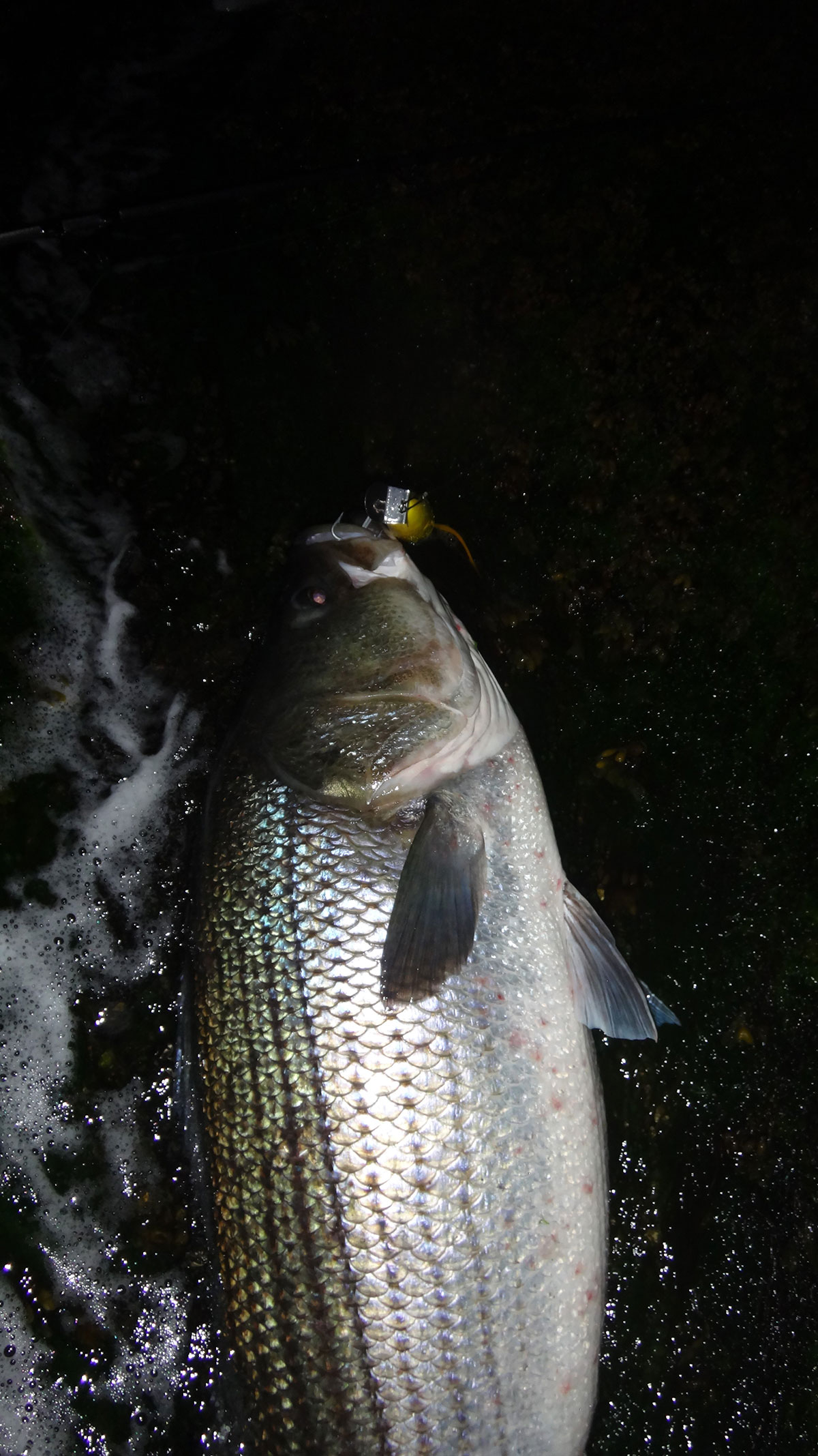
Deep thoughts on deep swimmers.
The concept of deep-running metal lips landed on my radar thanks to our Rhode Island field editor (and master surfcaster) John Hanecak. This was about a decade ago and he had been making Donny-inspired metal lips out of maple and fishing them in spots where he had historically done well with live eels. Needless to say, my interest was piqued. He asked me if I might like to try one, and of course I said I would. He made me one in a gray cloud color, one of my favorite confidence colors for nighttime fishing.
He described how he fished them and almost immediately, I began picturing the scenario in my mind. Cranking the big, heavy swimmer down quickly, swimming it right along the bottom. When the plug would clunk into or hang up on a rock, John said he’d just pause for a moment to allow the plug to float over the obstruction, before resuming the slow, steady retrieve. And I certainly couldn’t argue with the results he was having, notching scores of impressive fish on his wooden creations.
The first night I fished John’s swimmer, I was standing on a large flat rock at the very beginning of the incoming tide. In front of me was a deep, boulder-strewn flat where I had landed hundreds of stripers ranging from teens to over 40 pounds. Casting this deep swimmer through these lanes I thought I knew so well, gave me a whole new map of the water in front of me. Soon I was able to find a few ‘clean lanes’ through the rubble where I could swim my plug with minimal hang-ups. As the tide began to pull, I swam that plug through one of those deep lanes and I felt a heavy thump. This was not a giant, but a solid fish in the mid 20-pound class, that proved to me that I was going to like these things, a lot.
A year or two later, and after acquiring a few more of his swimmers, I found myself obsessed with watching underwater footage of blackfish swimming around the rocks. I was learning a lot about how these fish utilize their environment, but also how much time they spend, literally, just hanging in the water, allowing the current and wave action to move them through their environment. The sheer numbers of juvenile tog that hang around boulders, ledges, jetties and bridges convinced me of something I already believed, that juvenile tog (and other inshore bottom species) were a reliable food source for large, and even trophy class, stripers.
There were many takeaways from this phase of my surfcasting obsession, but the one I want to focus on here is that it is of the utmost importance to fish these plugs in the places where they can best represent the reason these big stripers are coming inshore to feed. What I learned from those videos is that juvenile tog typically stay very tight to the safety of structure. And also that days or nights with increased wave action creates mistakes – meaning when a powerful wave passes, it can sweep the occasional ‘misplaced’ blackfish out of that safe place, leaving them open for attack.
From the standpoint of you and I, standing on a rock or jetty, this means taking the risk of swimming that plug through the nastiest terrain within casting range of your spot. With the current cost of plugs, that can be a sickening proposition. But you invested in that plug because you believe it will catch fish; but it can’t do its job if you don’t put it in a position where the caliber of fish you’re looking for actually lives and feeds. When you look at it that way, it’s a self-fulfilling proposition. The price of that plug is the cost of doing business, but if you won’t swim it where the fish swim, it’s wasted money.
From here, the philosophy is simple. Find a deep edge you can access from the shore. Use your swimmer to feel for a few open lanes where you can swim your plug without too many obstructions, but also learn where the biggest ledges, rocks or edges are. Fish deep and risk the snags because that’s where these big fish are. Target days with bigger waves, and try to present the plug as if it were flushed out of its safe place and trying to rush back to safety.
Wait for the thump.



